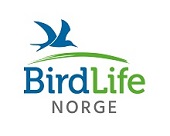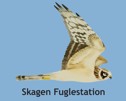
|
|
Willow Warbler The Willow Warbler arrived unusually late in 2023, coming 11 days later than expected in relation to the trend in our arrival phenology index. The annual report for 2023 is available!
(The annual report 2023 from Jomfruland and Lista can be read in Norwegian HERE) Low trapping numbers The ringing numbers for 2023 ended up much below average (1990–2022) for both observatories. A total of 1 159 birds were trapped at Jomfruland BO in spring, while 4 020 birds were trapped in autumn. This is 28,7 % and 23,9% below average, respectively. Corresponding numbers at Lista BO were 692 birds in spring, and 2 003 birds in autumn, which is 16,1 % and 49,7 % below average, respectively. The autumn figures at Lista was by far the lowest since monitoring began in 1990. Arrival was as expected In our phenology index for the spring, we have an estimated trend showing that 30 selected migratory bird species now arrive on average 3,4 days earlier than they did when monitoring began in 1990. Arrival in 2023 was very close (0,2 days earlier) to the expected in relation to the development of our index. A few species that normally arrive in early May were delayed. As an example the Willow Warbler arrived as much as 11 days later than expected. For most of the species there were small changes. 25 our of 30 species arrived with only +/- 4 days from the days they were expected. The migration counts were more positive than the ringing numbers The observations data (from migration counts) the results for 2023 (especially autumn) and the long-term trends were significantly more positive than in the standardized trapping. This applies especially to non-passerines. Many species of shorebirds and ducks had very high numbers in the 2023 autumn. The majority of these species breed far north and east (Arctic tundra). Important and unique monitoring The monitoring at the bird observatories is unique in the Norwegian context providing information on the phenology (migratory route) of our most common passerines. This makes us able to see how climate change affects bird migration. Both BirdLife Norway and the bird observatories want to contribute to knowledge-based management. Reporting and dissemination of the results from the work carried out at the bird stations is considered an important part of this. The annual report from the bird stations for 2023 can be read in Norwegian HERE. | ||||||

| Ringing numbers | ||||
|
| Reportasje fra Lista FS i Aftenposten |

|
| Seasonal deviation | ||||||||||||||||||||||||||||||
|
|
Følg Følg Lista FS på facebook.com |
| Siste 5 på siden |
|
Looking for two bird ringers for spring 2025 Lista Fuglefestival 2024 A total of 100 radio transmitters will be attached Fuglefestival 7.-8. september 2024 The annual report for 2023 is available! |
| Nyheter fra NOF |
|
Må bygge krykkjehotell i... Vadefugler sliter over hele... Tredje runde av Fotonøtta i... Illevarslende... Bekymret over forvaltningen... BirdLife Norge på besøk i... Vi kan ikke kjøpe kvoter for... 275 000 fugler talt i Norge... |
Lista Fuglestasjon
Fyrveien 6
NO-4563 Borhaug
post@listafuglestasjon.no Tlf: 949 86 793
 |  |


 Only in English
Only in English



